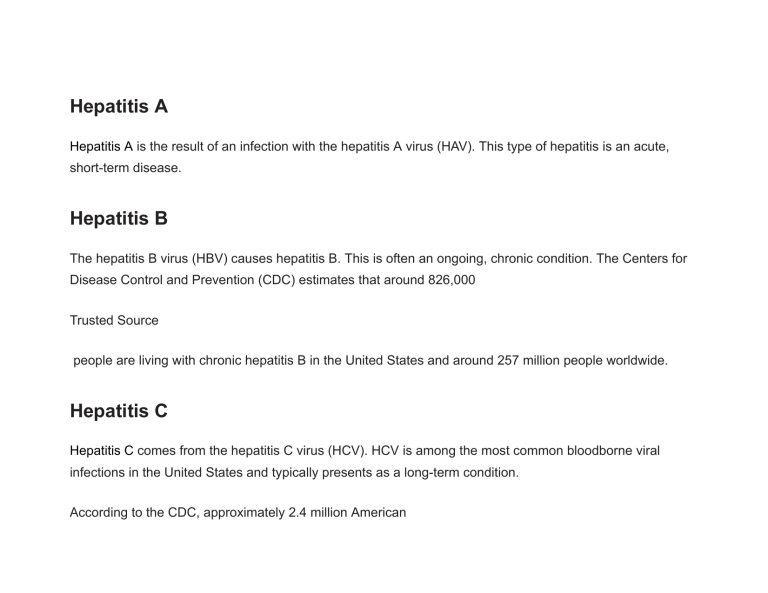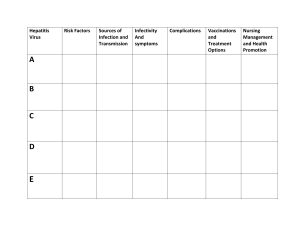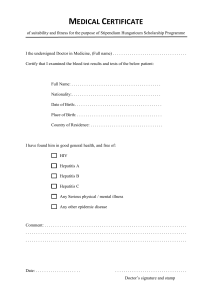
Hepatitis A Hepatitis A is the result of an infection with the hepatitis A virus (HAV). This type of hepatitis is an acute, short-term disease. Hepatitis B The hepatitis B virus (HBV) causes hepatitis B. This is often an ongoing, chronic condition. The Centers for Disease Control and Prevention (CDC) estimates that around 826,000 Trusted Source people are living with chronic hepatitis B in the United States and around 257 million people worldwide. Hepatitis C Hepatitis C comes from the hepatitis C virus (HCV). HCV is among the most common bloodborne viral infections in the United States and typically presents as a long-term condition. According to the CDC, approximately 2.4 million American are currently living with a chronic form of this infection. Hepatitis D This is a rare form of hepatitis that only occurs in conjunction with hepatitis B infection. The hepatitis D virus (HDV) causes liver inflammation like other strains, but a person cannot contract HDV without an existing hepatitis B infection. Globally, HDV affects almost 5 percent Trusted Source of people with chronic hepatitis B. Hepatitis E Hepatitis E is a waterborne disease that results from exposure to the hepatitis E virus (HEV). Hepatitis E is mainly found in areas with poor sanitation and typically results from ingesting fecal matter that contaminates the water supply. This disease is uncommon Trusted Source in the United States, according to the CDC. Hepatitis E is usually acute but can be particularly dangerous in pregnant women



